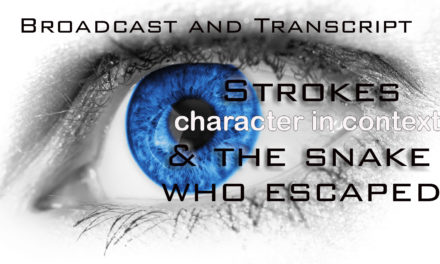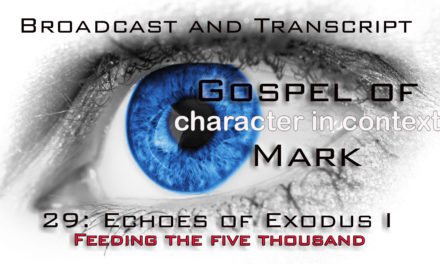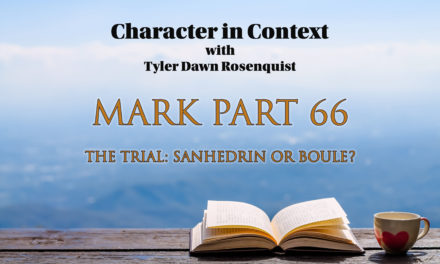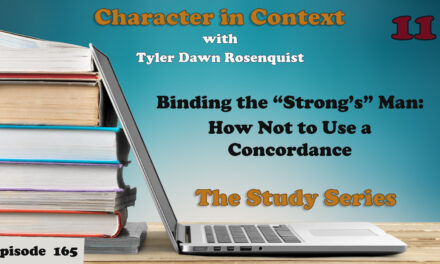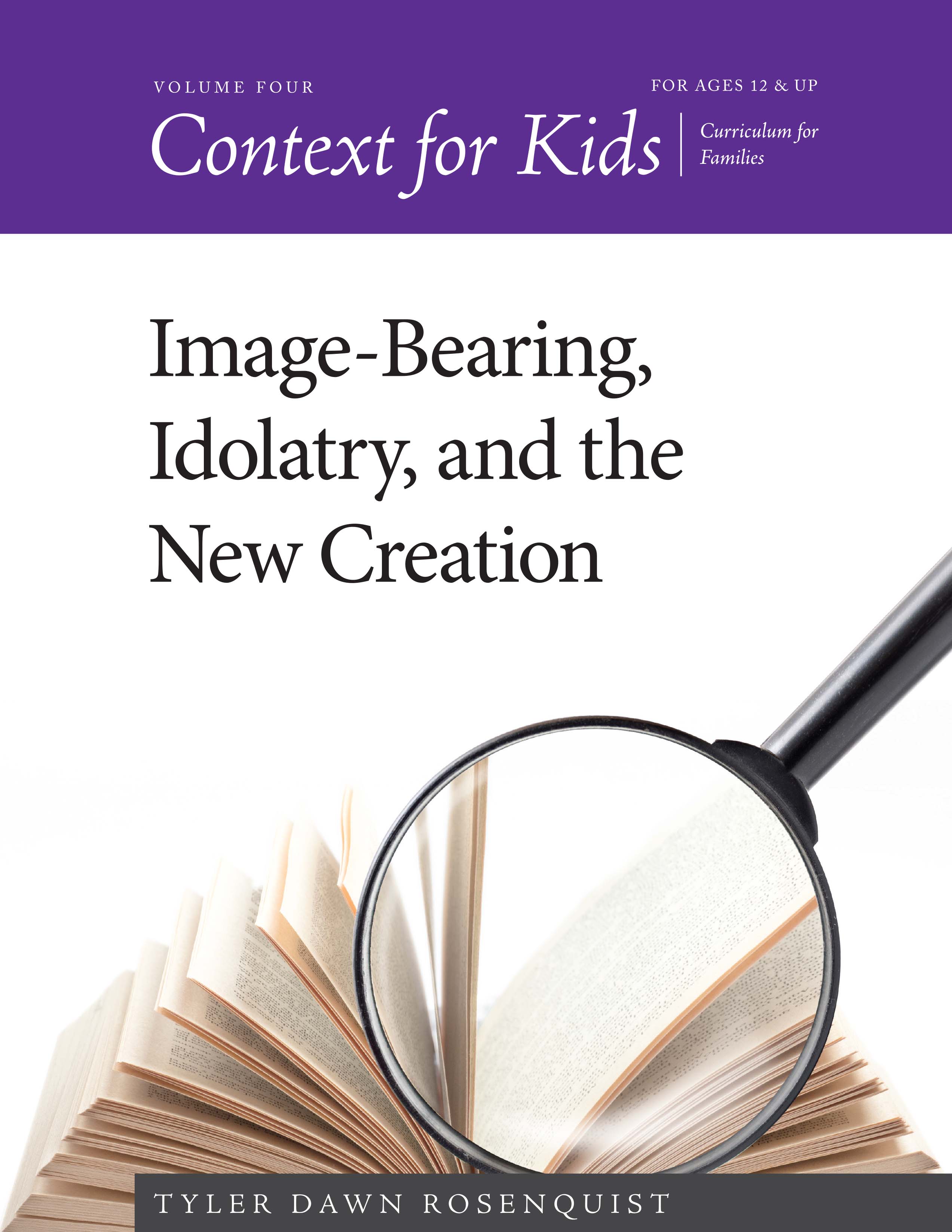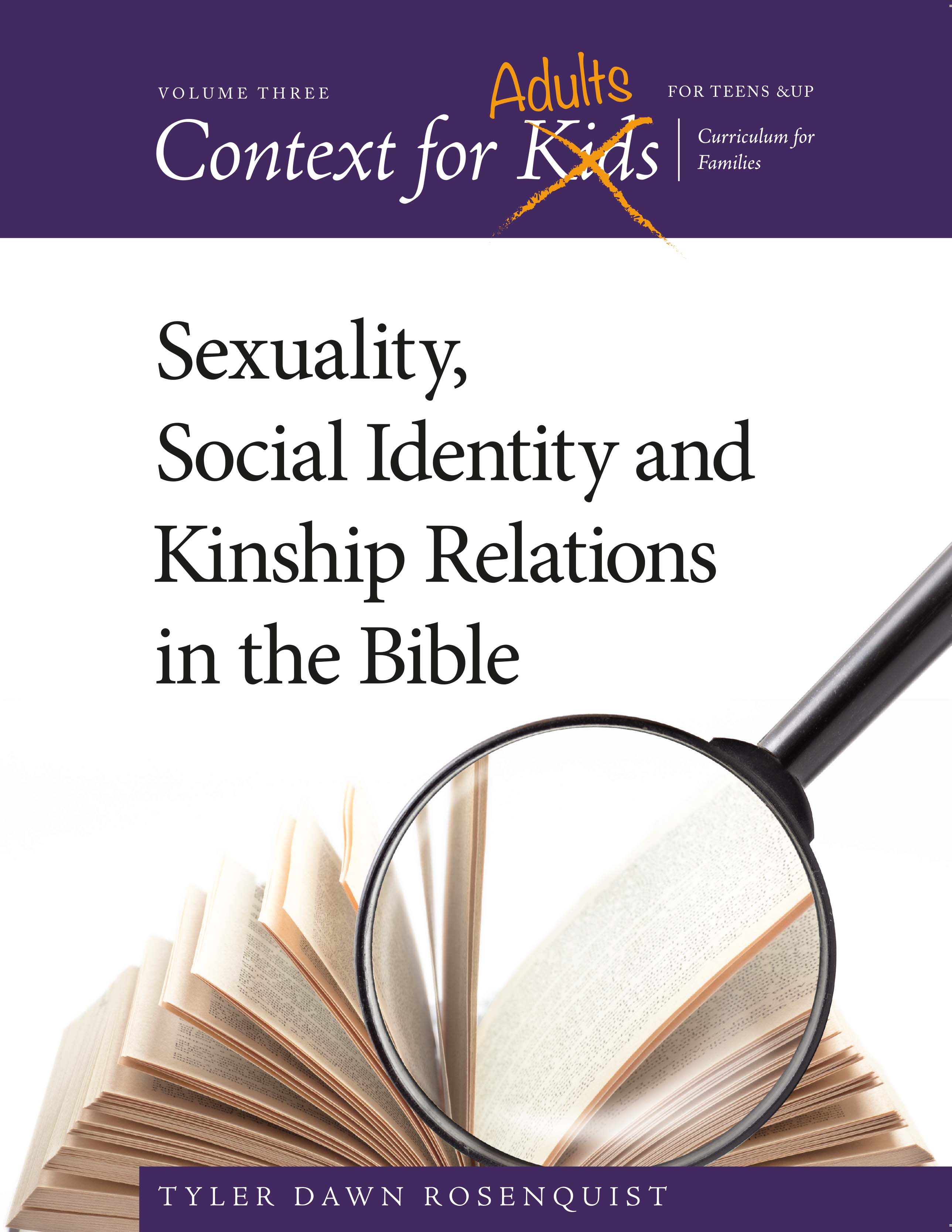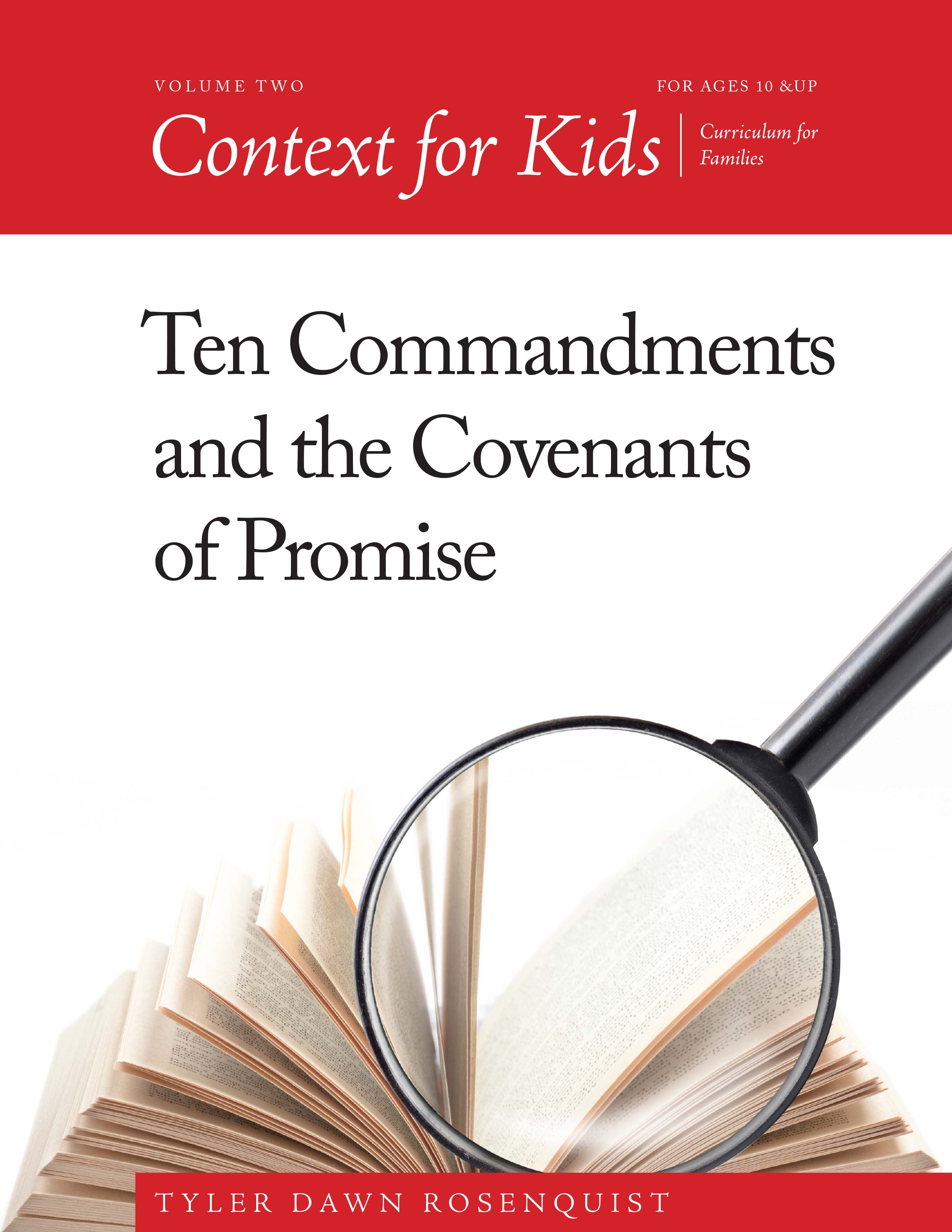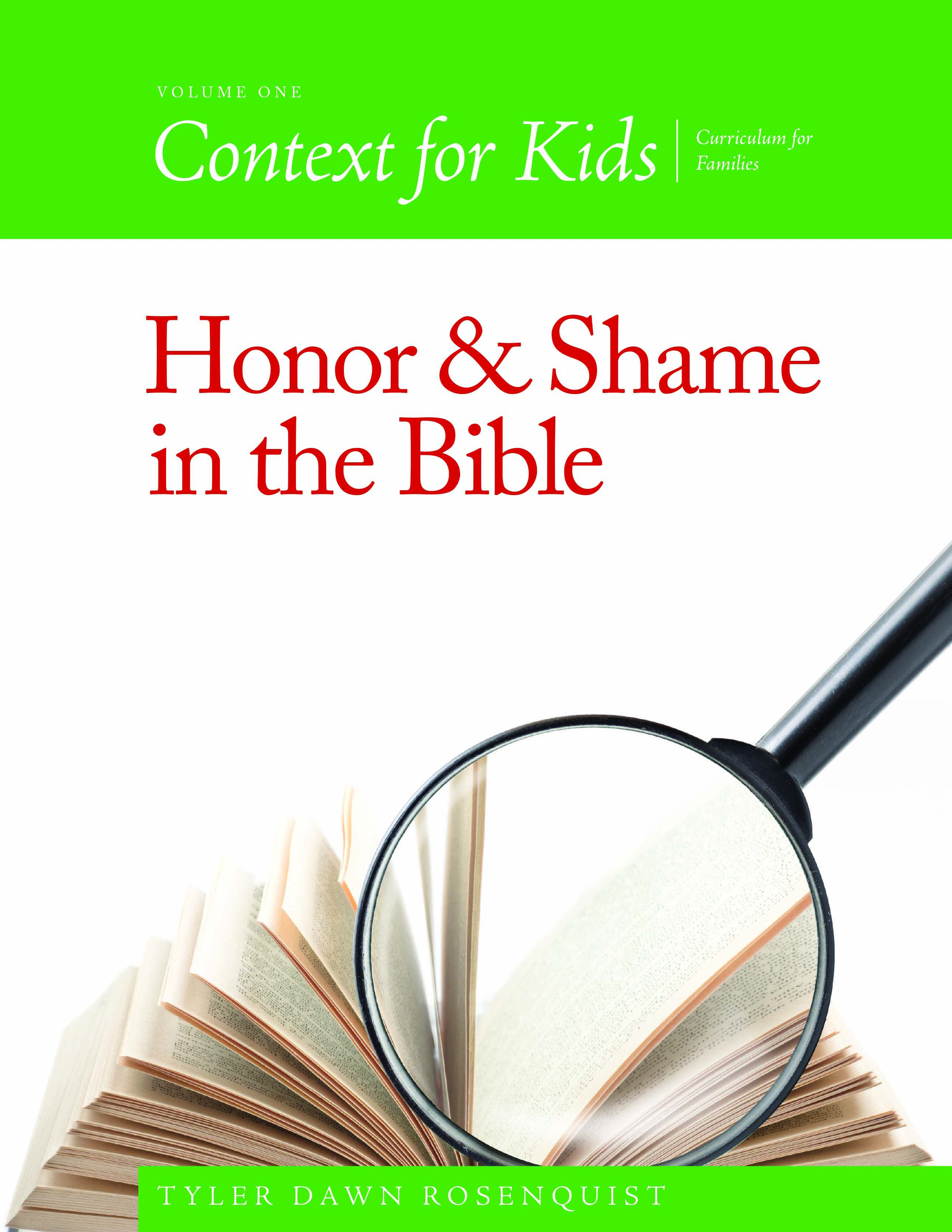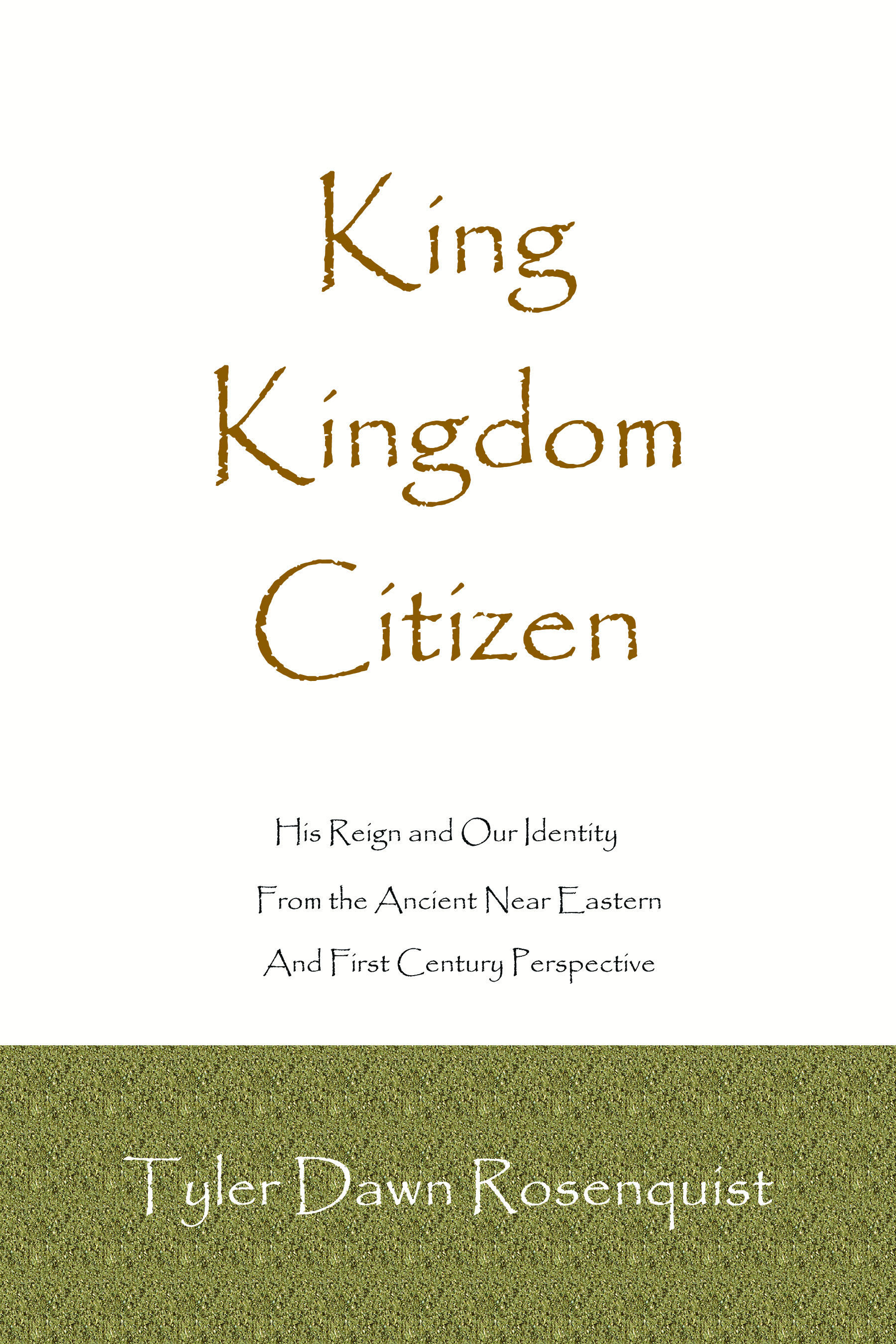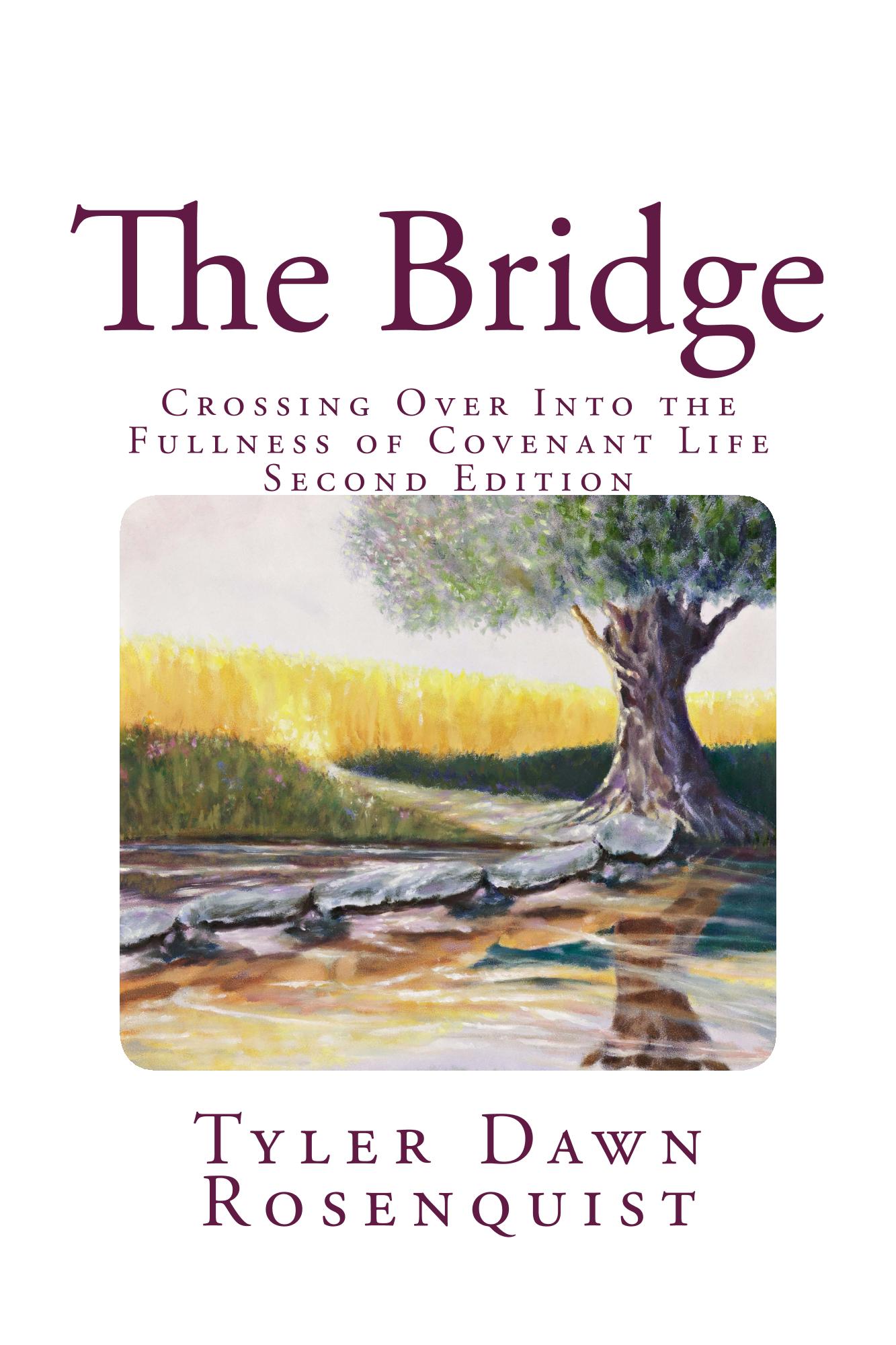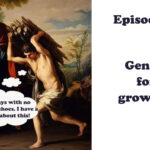Translation isn’t an exact science and there is no “one true interpretation”—not in any language. Translators have to look at words in Hebrew, Aramaic, and Greek and then make hard choices about which word in their own language would be the best substitute. And not every word can be translated easily—some can’t be translated at all because the original meaning of the word was lost. Also, sometimes Paul simply seems to have made up words by putting two actual words together. Words like dayenu, shema, ubuntu, and many others throughout the world cannot be translated without using a whole sentence or phrase. In addition, when the Bible was first written down, there were no vowel points in Hebrew and there were no spaces between words in Greek—who the heck thought that was a good idea anyway?
If you can’t see the podcast player, click here.
Hi, I am Tyler Dawn Rosenquist and welcome to Character in Context, where I usually teach the historical and ancient sociological context of Scripture with an eye to developing the character of the Messiah. But not right now, right now I am doing a series about how to not waste your time with bad study practices, bad resources, and just the general confusion that I faced when I started studying the Bible and was trying to figure out what to do and whose books I should read. Bottom line, I read a lot of nonsense and spent a ton of money on it. I am going to give you some basics on how to avoid a lot of the pitfalls, save money, maximize your time and effort, and get the most out of what you are doing.
Master book list can be found here and I will add to it as needed. Transcript is at theancientbridge.com.
It can be shocking to people when they find out that no Bible is a straight translation and not even the Greek and Hebrew sources are without interpretation. That’s right, we all have to face facts that what we are reading, no matter which translation or even the Hebrew and Greek “originals” (which, of course, we don’t have either) are the product of choices made by human beings in trying to relate the original meanings to us as closely as possible. But it shouldn’t really bother anyone because we are dealing with ancient languages which aren’t even spoken anymore. Modern Hebrew is not equal to Biblical Hebrew and Ancient Greek is not the same language as modern Greek. There are words that only appear once in all of ancient Greek and Hebrew literature, and we have no idea what they definitely mean even when we can guess from the context we find them in. In addition, a great many words in any given language do not have an equivalent, one-word translation into other languages. Words like shalom and ubuntu refer to larger concepts and can take a paragraph to do justice to, even when a native speaker hears those words and immediately grasps the entire meaning. I believe that if this was more generally understood, then we wouldn’t have the camps around specific translations calling this or that the one and only true word of God. It doesn’t work like that and frankly, it can’t. And this requires us to become extraordinarily humble in our handling of the text—not to mention gracious.
First of all, let’s talk about what a translation is and how we go about getting one. The best translations, of course, are to be had when a group of experts come together and work on the manuscript evidence as a team. And not just any manuscripts but the best we have available. Not all manuscripts are created equal. An in-depth knowledge of not only Hebrew, Aramaic and Greek are required but also related languages which have impacted or were impacted by the languages we find in the Bible, like Akkadian and ancient Egyptian. An understanding of sociology and culture are also important, as well as the rhetorical styles of the ancient world. This is just a small part of why we cannot simply pick up Strong’s Concordance and start plugging in suggestions willy-nilly according to our own agendas—I did a larger broadcast on that so we won’t be covering that here.
An interpreter has to understand whether they are interpreting a polemic, a letter, an allegory, a narrative, or poetry. Word for word literal translations don’t work for much of anything but the simplest of sentences—which are rarely found in oral or written stories. In every language, words are used together in ways that are more than the sum of their parts. One of the more famous examples of this within scholarly circles is the phrase “righteousness and justice” or Tsedekah and Mishpat. Righteousness means one thing, and justice means another, but when used as a pair, they mean something entirely different throughout the ancient Near Eastern world. And if that sounds confusing, think of the words nice and warm. Nice means something, and warm means something, but the phrase “nice and warm” means something very different. Warm isn’t always pleasant, and nice can mean a great many things but put them together and they mean something like “cozy” and bring to mind either a warm fire on a old day or a spring day after a long winter. What it means exactly can only be understood from the context of the story being told. In the same way, righteous is a legal term meaning that in a certain matter, one person is declared to be right and the other wrong—righteous vs unrighteous. It isn’t necessarily a value judgement about a person’s whole life but related to a certain incident. The most famous case of this in the Bible is Judah and Tamar where he declared her righteous compared to himself when she disguised herself as a prostitute in order to get pregnant and raise up a son for her dead husband when Judah had all but cut her off from the family. What she did was gross, for sure, but justified based upon ancient Near Eastern laws and customs. And Judah owed her both a husband and children as per the marriage agreement with his son. Justice is different because it carries the understanding that decisions will be unbiased and fair. But when we put them together as a pair, righteousness and justice, they mean the sort of rulings that a new king was expected to make upon coming to the throne—to set the captives free, support the cause of widows and orphans, and to right the wrongs committed against the oppressed, that sort of thing. And yes, all that should sound very familiar to anyone familiar with the prophets and the ministry of Yeshua/Jesus.
A translator also has to reflect the style and intentions of the different human authors. Although inspired by the Holy Spirit, these authors weren’t robots. The language choices, wording, and general voice are often very different. Paul writes differently than Isaiah, even though Paul quotes from Isaiah a lot. And no one would mistake either for what we find in the Gospels—all of which obviously had different authors from one another even if they did use much of the same source material. You know, when someone quotes me on social media I can usually tell that it was written by me long before I see the credit at the bottom. Even if I don’t remember writing it. What I write and how I write it is as familiar to me as the sound of my own voice. The Biblical writers were the same way. If the Holy Spirit was simply taking over their bodies and writing, all of the books of the Bible would sound exactly the same, regardless of the language or origin and the time period. The style and culture of each author is very much reflected in the book they wrote. And of course, I have told you that the Bible isn’t one book but a library with many different authors. And sometimes a single book will have multiple authors as editors would have pieced together what, for example, different people recorded about David’s reign (Samuel obviously was not the writer of I and II Samuel because he was dead for most of it).
In addition, the meanings of words changed even between the writing of different books. And the way certain concepts were communicated. Sin is spoken of differently in the OT than in the NT. What was once seen as a stain is later spoken of as a debt based upon how different generations communicated the same concept. We see this in our own language as well where the meanings of words change. It is an absolute normal part of every language as it evolves. Words like gay, cool, and drama all mean something entirely different than they did a hundred years ago—and yet we still also use them according to their old meanings as well. There is nothing simple about a translation job. In the Bible, we have words like Elohim and ba’al that have a multitude of meanings—some positive and some negative. Elohim doesn’t always refer to Yahweh our God and Ba’al isn’t always referring to a false god.
And what about words that only show up once in the Bible and never outside? What are translators supposed to do with those? Words whose meanings are unknown even to Hebrew and Greek experts and don’t show up in any other related language either? Mazzaroth, for example, which people have recently decided refers to the Hebrew version of the astrological chart representing the twelve tribes and what they believe God showed Abraham in the skies. But that was a decision for the sake of sanity—we have no idea what that word actually meant in ancient times. It is a unique word. There may come a time when archaeology changes that but as for now, we can only guess and so the word goes untranslated in the Bible. Instead, it is transliterated syllable for syllable into English or whatever other language the Bible is being translated into. And Paul was notorious for making up new words entirely based on needing words that just didn’t exist in Greek—sometimes combining two Greek words in an unexpected way to communicate a concept that was very foreign to gentile audiences, or sometimes seemingly making something up entirely that can’t be found outside the Bible. Of course, with Greek we actually have a ton of help in translating because so much Greek literature still exists and that can be mined for definitions for a great many otherwise unknown words. For example, when I did a teaching on pharmakeia, I had to go outside the Bible to discover what it meant because it isn’t as obvious as many assume simply based upon modern usage of related words. With ancient Hebrew, the Bible is all we have to go on, which makes things difficult. Scripture doesn’t always interpret Scripture—words still mean things in their original context and setting and no manuscript comes with any sort of dictionary.
Greek manuscripts have no spaces between words or punctuation. Can you even imagine making judgment calls about where to divide up sentences or words? The job of a translator seriously sounds like living in the third level of hell for me (just FYI, that is the level directly below being forced to drive a middle school bus for all of eternity and right above being the manager that Karen demands to see). Hebrew has an entirely different problem—no vowels until the late first millennium. Like over seven hundred years after Yeshua rose from the dead. And there are also situations where textual critics are quite certain that a letter in a word was copied incorrectly with that error reproduced by scribes. A yod can look like a vav and a vav can look like a finial nun. A sloppy samek can look like a finial mem. If you have ever looked at the manuscripts, it can be very hard to tell what a specific letter is and without vowel points it can be hard to make a judgment call if a particular word should be this or that. We can never lose sight of the fact that they weren’t using a typewriter or a computer. These were handwritten documents and as much as we might like to believe that handwriting doesn’t matter, we all know that it varies from human to human and when you are dealing with such a huge document, no one is perfect with every stroke. That the manuscripts are even as much alike as they are is practically unbelievable and really speaks to the commitment and skill of the scribes.
All of this, plus a whole lot more that I am not even remembering, means that translators have a huge job. Word order differs from language to language. One Hebrew word can be the total of many English words. For example, instead of “my father” they say avinu and to translate it literally would come out as “father-mine”. They combine possessive pronouns with the root word, and with verbs it gets a lot more complicated with the different forms, tenses, and indicators as to whether a male or female is carrying out the action. For someone like me, who has struggled with foreign languages since I was six years old, it’s a nightmare.
And what do translators do when a verse is traditionally in the text but when older, earlier, and superior texts are found without the verse? Remove it and people scream that you are taking away from Scripture, not understanding that at some point the verses were actually added. And how do verses get added? Sometimes, a scribe would go on autopilot, misremembering what comes next based on competing Gospel accounts and they might add a line from Luke to Matthew absolutely innocently. The next copyist just assumes that is correct. Another possibility that we see are notes added into the sides of the manuscript and sometime later being mistaken for a scribal mistake which gets added in. The least known example and probably most egregious is the addition of I Cor 14:34-35. Scholars now understand that this was a much later addition as it is absent from early manuscripts and seems to have been a side note inserted by a Greek congregant, as the Greeks were notorious for not allowing women to be educated. Here are the verses: 34 the women should be silent in the churches, for they are not permitted to speak, but are to submit themselves, as the law also says. 35 If they want to learn something, let them ask their own husbands at home, since it is disgraceful for a woman to speak in the church. (CSB). Even the scribes didn’t believe it was original, as their editorial marks show, but it is very hard to remove something that people are used to. With these two verses, we have the additional problem of them appearing in two different places based on which later manuscript is used. As the verses are obviously out of place in each location and as they directly refute other verses in I Cor which have women praying and prophesying and whatnot in the congregations, it provides quite the dilemma. To keep or not to keep—it’s a catch 22. The people reading the Bibles aren’t scholars and most do not accept textual criticism and can’t even deal with the fact that we don’t have any autographs, originals, to use as a ground zero of what is and is not accurate. Sure, assuming that everything is always accurate is comforting but it isn’t reasonable, and the documents don’t back that up—not for the Greek, Hebrew or Aramaic Scriptures.
Here’s another dilemma. Does a word like adam mean the person Adam, or a man in general or all of humanity? And how does the meaning of the text change if you choose the wrong one? Let’s look at Gen 1:26-27: Then God said, “Let us make man in our image, according to our likeness. They will rule the fish of the sea, the birds of the sky, the livestock, the whole earth, and the creatures that crawl on the earth.” So, God created man in his own image; he created him in the image of God; he created them male and female. (CSB)” Did God only make men in His image? That’s how some interpret it. And yet the context says that man is male and female, so we are forced to translate it as mankind or humanity or humans or people. Some go so far as to make the original human half male and half female but that is not what was originally being communicated. God created humans in God’s image, in male and female form/with male and female biological functions but both carrying the equal image of God together. They were created as a team to rule over the entirety of Creation. Like the verses I read to you above, what I just said was also an interpretation. To focus on maleness and to focus on all of humanity are both interpretative and translational choices. And the Bible is full of these decisions about how this or that is best said either to reflect the original intent of the author or to be understandable or to serve an agenda or to best reflect the actual text. As much as we would like to do all of these things, it is not possible. Translating a story from one language to another—languages that frankly have nothing to do with each other linguistically—is always going to be about choices. Which is why one person shouldn’t ever be trusted with the whole process unless there is no alternative.
Egalitarians (who believe that men and women are completely equal, differing only in biology and not in ability to lead and rule over creation or serve in church), complementarians (those who believe that men and women aren’t equal in society but only in being image-bearers, with different roles in the church and as marital partners with the men in authority over the women), and staunch patriarchalists (who believe that men and women are not equal in any way shape or form, with men being superior to women in all relationships public and private) all make different interpretative choices when translating the Bible. And there is a lot of wiggle room and gray area to work with in pursuit of the desired outcome. This is why a good translator isn’t just a master or languages but also understands the greater meta narratives of Scripture—the overarching story lines that tie the books of the Bible together in unity despite their many differences—so that they can see where we began and where we are heading to in order to reflect the Biblical narrative as one beginning in a mess and ending in perfection. I am just glad it isn’t my job.
People often ask me which is the best translation/version for them. And translations and versions are different things. The KJV, for example, is not a new translation but a piecing together of what former translators had accomplished (mostly Tyndale, if memory serves). And if anyone wants to protest that it is the “authorized version” I will have to remind them that “authorized” meant one and only one thing—it was about the printing rights. Only a handful of London printers were authorized to produce copies of the KJV and bootleg copies from other printers (which lacked the stamped authorization) were gathered and burned. In fact, funny story here, one of the first things that printers in the states began to do after throwing off British rule was to begin printing off their own “unauthorized” copies of the KJV for popular reading. I am not dissing the KJV—it was a marvel for its time. But the translation was based off of only a handful of Greek manuscripts, none older than the 12th century, as well as the Masoretic text of the Hebrew Scriptures, from the late first millennium. Translationally, it was a good fit for the audience of common people because it was in colloquial English, with the common thee, thine, and thou instead of the formal, royal you and your. Shakespeare wrote largely for the uneducated—it only sounds fancy and hifalutin now because it is foreign to us. Words no longer mean what they did, which can be really confusing and lead to bad interpretations on our part. Anachronisms crept into the text—with bursting bottles instead of wineskins, Easter instead of Pasca, but also accurately has the name Junia as an apostle instead of later versions who objected to the name of a woman and changed it to Junias, like the NASB. Different versions of the Bible all have their pros and cons. Things they get right and things they get wrong.
I want to talk to you about three of the worst abuses of Biblical interpretation and all are in what I would call “fringe” Bibles—which are Bibles that were written to a target audience for various reasons in order to profit or cater to a certain group and push certain agendas. Probably the best known is the QJB, the Queen James Bible, which was manipulated in such a way as to actually completely alter the meaning and sense of any and all verses related to homosexuality—without any scholarly backing. I was about to tell you about two problem Bibles within the Hebrew Roots/Messianic circles but then I remembered others. And I am not going to name names here because some of the information I have is second hand but some of these Bibles are plagiarized with paleo Hebrew just inserted into existing translations, others are “translated” by people with zero knowledge of Hebrew, Aramaic and Greek who used Strong’s Concordance and the “Holy Spirit” to come up with their own versions, and others misrepresent modern works like Sefer HaYasher as the ancient book of Jasher and claim that extra-biblical books that were never considered to be canonical by the Jews are somehow inspired—like Enoch and Jubilees. If you recall, we talked previously about how it was discovered, when Jerome went to Bethlehem to learn Hebrew from the Jews so that he could translate his own version and not have to rely on anyone else’s work, that the Greek apocryphal books weren’t ever considered to be anything other than fictional and popular writings by Jewish authors and sectarians. So, just be careful and if you are ever wanting advice on a Bible to choose, since it is quite the investment, never hesitate to get hold of me. Another version makes the debunked claim that “aleph-tav” is code for Messiah throughout the Hebrew Scriptures but that is to actually ignore its literal function of pointing from a verb to the direct object of it’s action. In Genesis 1:1 for example, “Bereshith bara Elohim et hashamayin va’et ha’aretz.” The verb is bara, meaning to create and only ever has God as the subject doing the creating. What is God creating? Et hashamayim and et ha’aretz. The two “et” simply point to the two things created by God. “In beginning God create–>Heavens–>earth.”
And these Bibles are generally really expensive but are based on a lack of knowledge of linguistics, literature, grammar, etc and put together in order to serve agendas. But they are interpretations based on faulty premises and not based on knowledge. Take the time to get a trustworthy version put together by a committee of experts and not by someone trying to lure you in with promises of special revelation.




